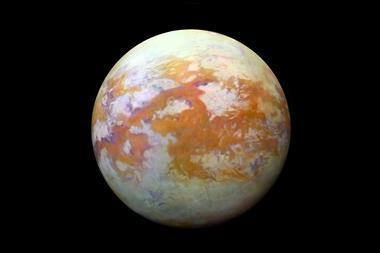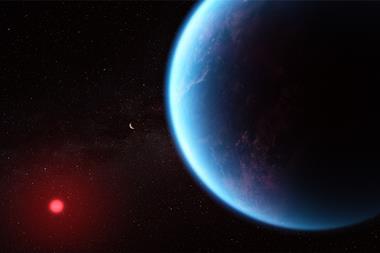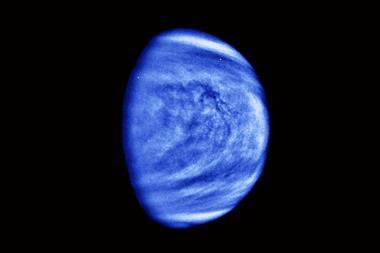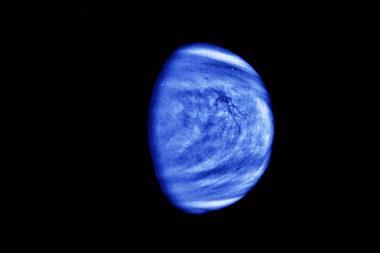Speculation about conditions on Venus raises questions about our existing definitions
The notion of a habitable zone in astrobiology is looking ever more shaky. According to the definition on Nasa’s Exoplanet Exploration site, this zone of a solar system is ‘The distance from a star at which liquid water could exist on orbiting planets’ surfaces.’ That implies the zone is an annulus with a maximum and minimum radius, which is undermined even in our own solar system by the fact that several worlds, notably Jupiter’s moon Europa and Saturn’s moon Enceladus, lie outside the conventional habitable zone but have water below their icy crusts kept liquid by tidal heating. Enceladus’s ocean was recently shown to contain phosphates, completing the inventory of elements needed for life as we know it.1
But perhaps habitable zones are both bigger and smaller than we once thought. Astrophysicist Cassandra Hall and colleagues at the University of Georgia, US, have argued that exoplanet searches for signs of life might be more narrowly focused on the ‘photosynthetic habitable zone’ where both liquid water and oxygen-producing photosynthesis can occur.2 They identify five exoplanets seen by the Kepler space telescope that fit this criterion, making them prime targets for spectroscopic examination of their atmospheres.
Meanwhile, the claimed detection in 2021 of phosphine (PH3) in the clouds of Venus,3 which is outside our solar system’s conventional habitable zone, excited speculation about microbial life subsisting in those atmospheric droplets, even though they are made from concentrated sulfuric acid. There is, you see, no known geological source of phosphine. But while the detection itself has been debated,4,5 it is also hard to see how anything like terrestrial life could exist in the Venusian clouds, because their water activity is far smaller than the minimal value at which microbes are known to live on Earth.6 (Full disclosure: I was an author on the paper that calculated this activity.)
It’s nonetheless intriguing to speculate about what might be possible in those clouds. It’s not absurd to wonder if sulfuric acid might itself act as a solvent for some kind of life – it can, after all, engage in hydrogen bonding. It’s often implied that the extreme acidity of the cloud droplets would be inherently inimical to life, but that’s not a given. Sara Seager at the Massachusetts Institute of Technology and colleagues have recently shown that both the purine and pyrimidine bases of the nucleic acids DNA and RNA remain stable in concentrated sulfuric acid.7 DNA and RNA themselves cannot persist in these conditions, however, because the phosphate ester backbone and the ribose sugar would be degraded by the acid. To use these bases to encode sequence information would require an entirely alien biochemistry.
What’s more, the bases themselves would be protonated and therefore probably unable to form the Watson-Crick base pairs that are so central to the DNA double helix and to the mechanisms of information storage and transfer in genetics. Arguably this renders the stability of the bases themselves at such low pH no more significant than that of many other organic molecules. DNA does its job as an entire supermolecule, and there is no biology somehow inherent in its fragments.
Either way, it remains the case that any life extant in the Venusian clouds would have to be chemically quite unlike that on Earth. Recognise this, and the argument is no longer about ‘habitability’ in the normal sense. (As our paper pointed out, from the perspective of liquid water activity there is more habitability in the atmosphere of Jupiter than on Venus.) Rather, the discussion turns to the enticing but highly speculative question of whether we can imagine ways life-like chemical complexity could develop in a more exotic environment.
That is what Seager and colleagues attempt in another recent paper,8 in which they argue that ‘Venus’ atmospheric chemistry and cloud characteristics are compatible with Venusian life’ – so long as it is not life as we know it. One challenge is to keep such life in the cloud layer when the droplets tend to settle under gravity, which they say could happen via gravity waves or light-induced droplet motion.9 And perhaps Venusian cells could actively pump water from the arid surroundings into their interior? Or might Darwinian evolution be able to produce organisms that can thrive when extremely little water is available?
Inventive speculation like this, which can be extended to the hydrocarbon lakes of Titan, enriches the discussion of what ‘habitable’ could mean in astrobiology. But it needs to stay cognisant of what we know about living systems: about habitability as we find it. Water, for example, is a subtle, versatile and active component of them, not a mere solvent. One’s imagination will need to work hard to replace it.
References
1 F Postberg et al., Nature, 2023, 618, 489 (DOI: 10.1038/s41586-023-05987-9)
2 C Hall et al, 2023, arXiv: 2301.13836
3 J S Greaves et al, Nat. Astron., 2021, 5, 655 (DOI: 10.1038/s41550-020-1174-4)
4 G L Villanueva et al, Nat. Astron., 2021, 5, 631 (DOI: 10.1038/s41550-021-01422-z)
5 J S Greaves et al, 2023, arXiv: 2211.09852
6 J E Hallsworth et al. Nat. Astron., 2021, 5, 665 (DOI: 10.1038/s41550-021-01391-3)
7 S Seager et al, Proc. Natl Acad. Sci. USA, 2023, 120, e2220007120 (DOI: 10.1073/pnas.2220007120)
8 W Bains, J J Petkowski and S Seager, Astrobiology, 2023, 23, DOI: 10.1089/ast.2022.0113
9. S Seager et al, Astrobiology, 2021, 21, 1206 (DOI: 10.1089/ast.2020.2244)

















No comments yet